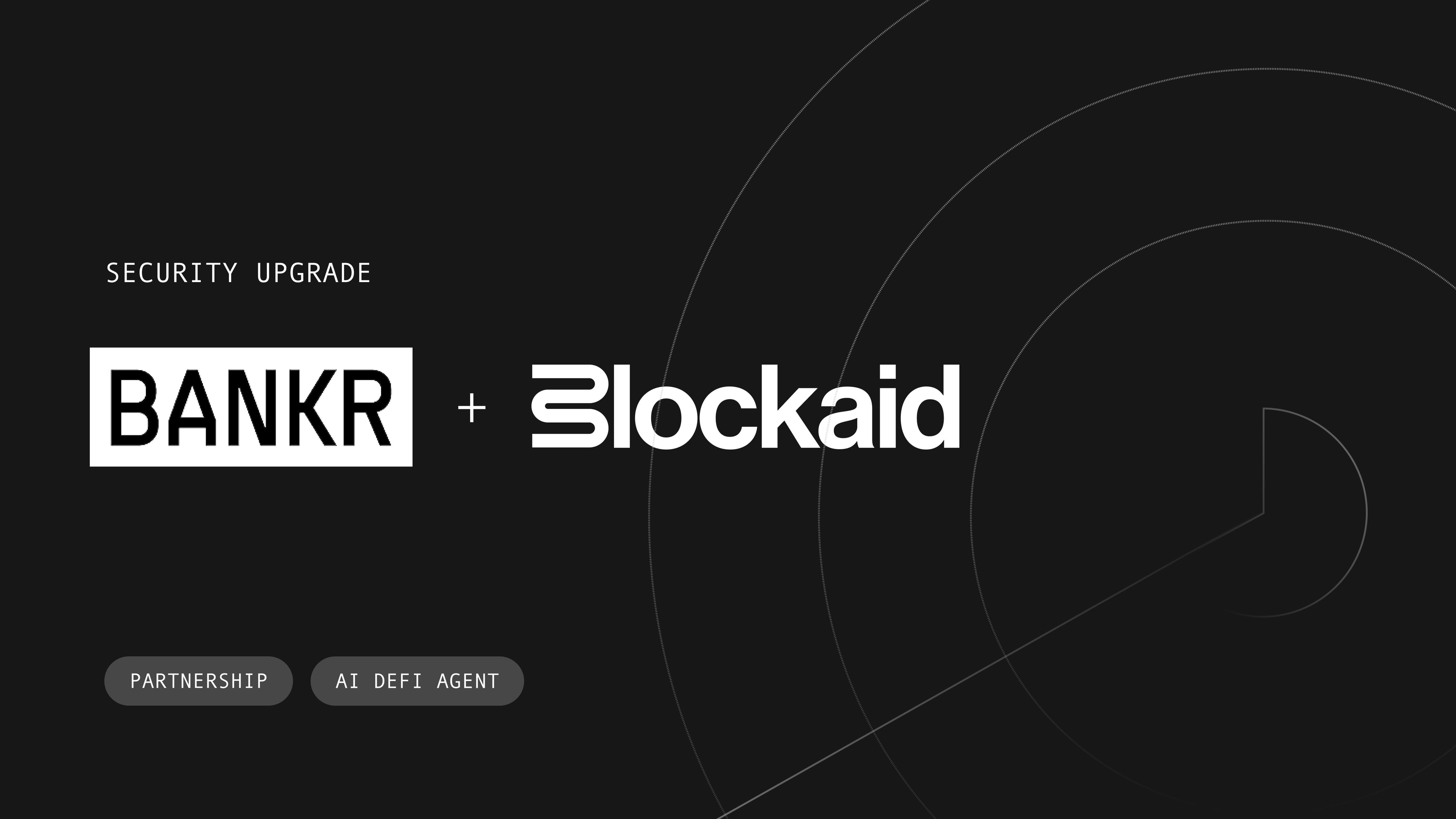Data Spotlight: How Scammers Reacted to the $TRUMP Token Launch

The launch of the $TRUMP token on January 17, 2025, brought a media frenzy and a wave of excitement to the crypto world. Backed by the Trump family, the token quickly captured public attention, reaching a market cap of $72 billion in just 48 hours.
Yet, as with many high-profile launches, it also became fertile ground for scammers, who wasted no time exploiting the buzz.
Blockaid’s latest analysis reveals the dark underbelly of this hype: a rapid proliferation of malicious tokens, fake dApps, and scams using the Trump name and branding. This surge highlights a pattern we’ve seen before—where scammers leverage major news events in crypto to deploy schemes aimed at unsuspecting users.
How Scammers Exploited the $TRUMP Token Launch
The $TRUMP token’s launch created a perfect storm for fraud. Public interest, combined with the controversial figure behind the brand, meant that people rushed to buy in—often without proper due diligence. Scammers capitalized on this frenzy by:
Flooding the Market with Malicious Tokens: Tokens bearing the "Trump" name increased by 206% on the launch day, with scammers deploying 6,800 tokens—up from the usual 3,300. Many of these tokens used misleading branding to lure investors.
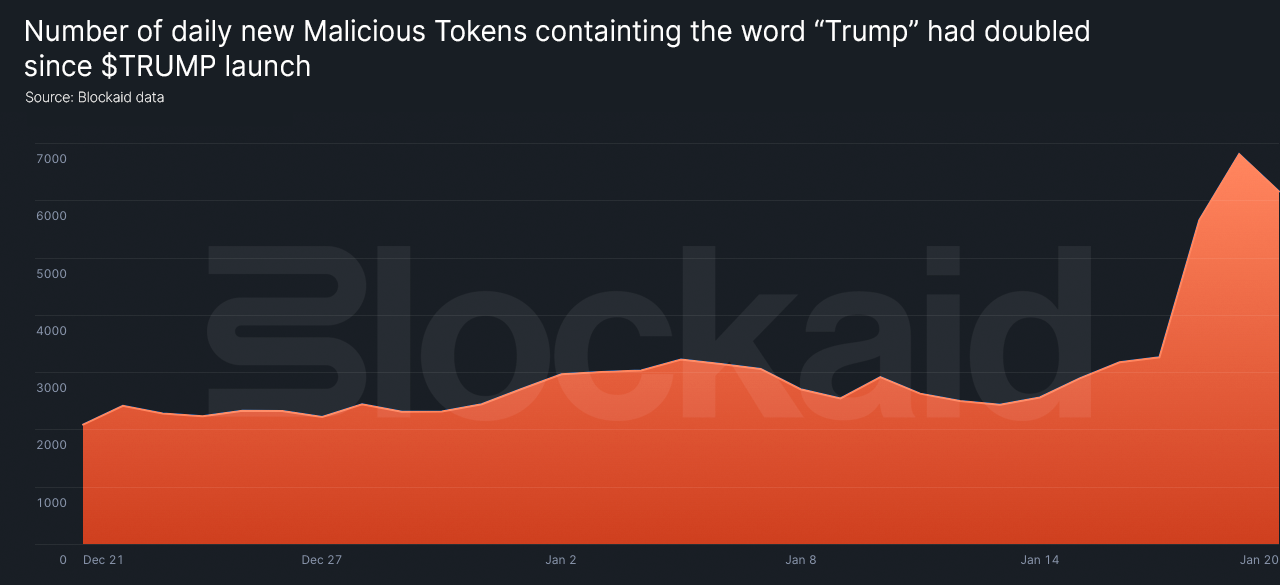
Deploying Fake dApps at Record Rates: Impersonator dApps (malicious dApps that use President Trump's name) saw a 14x increase the day after launch, with 91 fake applications deployed in just 24 hours. These dApps often trick users into connecting their wallets, allowing scammers to drain funds.
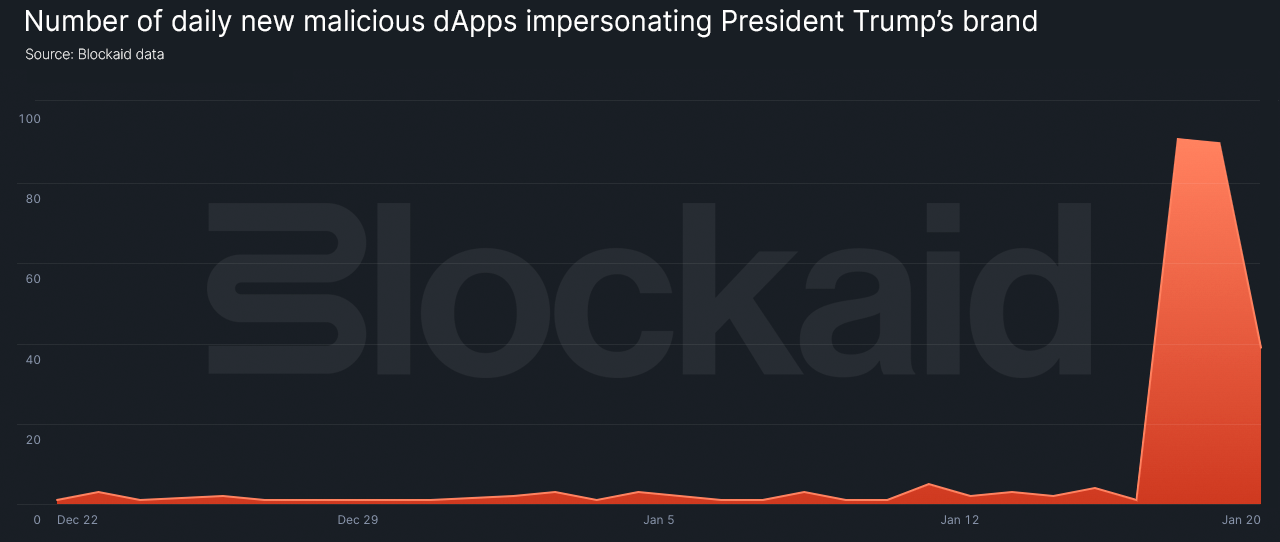
Broadening the Scam Scope: Scammers didn’t stop with $TRUMP. Tokens with metadata referencing the Trump family—such as “Melania” and “Barron”—surged by 592%, creating the illusion of an interconnected ecosystem.
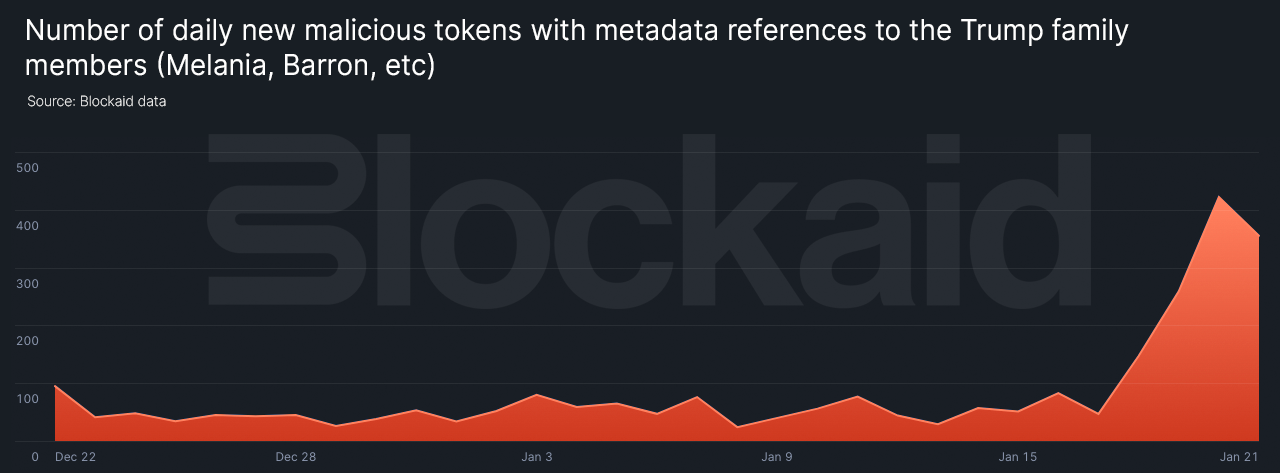
The Bigger Picture: Highlight Crypto’s Security Gap
The $TRUMP token launch wasn’t just a magnet for investors—it was a beacon for scammers. This event highlights a core truth about Web3: rapid innovation brings opportunity but also significant risk. The decentralized nature of crypto, while empowering, also leaves users vulnerable to malicious tokens, fake dApps, and scams that exploit FOMO.
Systemic Solutions, Not Just User Vigilance
Relying solely on users to spot scams isn’t realistic. That’s where Blockaid steps in. Since the $TRUMP token launch, our technology has blocked hundreds of users from interacting with scam tokens and malicious dApps.
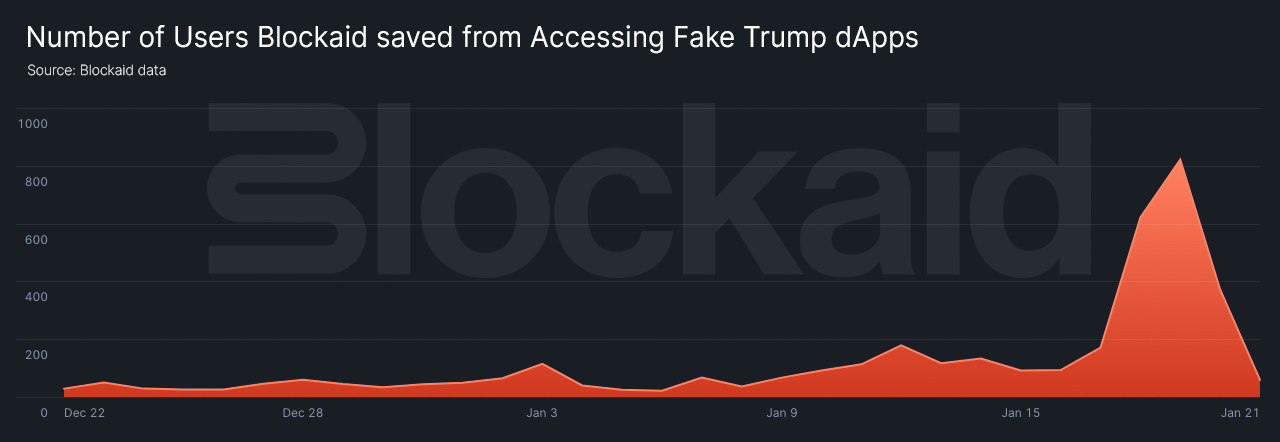
That’s why partnerships like Blockaid’s collaboration with wallet providers like Coinbase or Metamask and our integration into token interfaces like DEX Screener and Uniswap are game changers.
By integrating real-time threat detection, these companies stop threats at the platform level, ensuring users interact only with legitimate assets. These systemic protections tackle the problem at its source, making Web3 safer for everyone.
Security as an Accelerator
Scams are a byproduct of crypto’s explosive growth, but they don’t have to slow progress. Just as phishing didn’t derail the internet, robust security measures will keep Web3 on track. At Blockaid, we believe security is the key to unlocking mass adoption—enabling users to explore the onchain world without fear.
Conclusion
The $TRUMP token launch serves as a stark reminder of the adversarial nature of the onchain space and the critical importance of proactive security. Blockaid’s efforts in blocking scams and partnering with platforms demonstrate that robust protection isn’t just possible—it’s essential.
As Web3 evolves, security must remain at the forefront, enabling innovation to thrive while safeguarding users. Together, we can build a crypto ecosystem that’s not only powerful but also safe, trusted, and ready for mass adoption.
Blockaid is securing the biggest companies operating onchain
Get in touch to learn how Blockaid helps teams secure their infrastructure, operations, and users.




